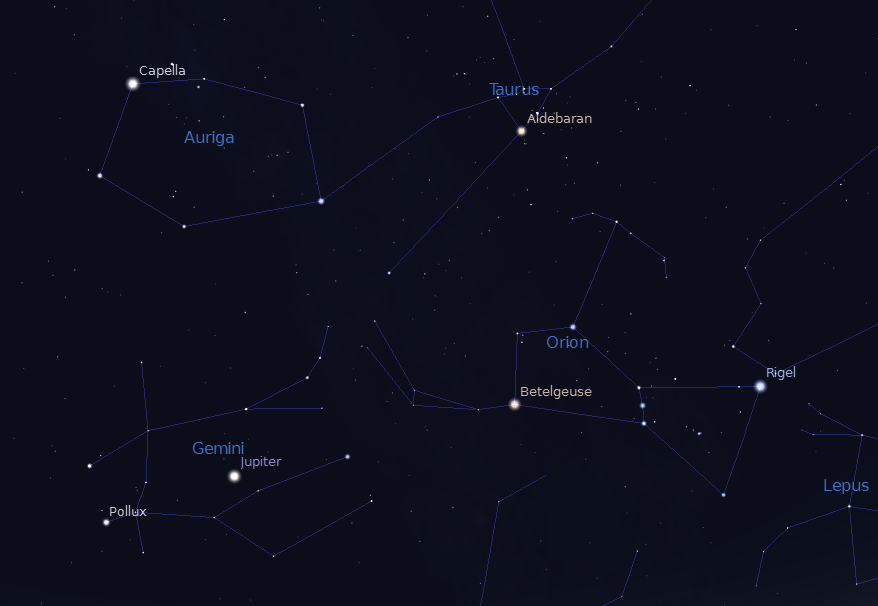The Quadrantids meteor shower opened the new year with its annual display of ice and rock forming blue and white tails as they approached the sun.
Unlike other meteor showers that peak for a couple of days, the Quadrantids peaked for only about eight hours around Jan. 3. The Quadrantids also came from an asteroid, an unusual source compared to the typical comet. However, those peaking hours were a special time for stargazers, as they could catch a glimpse of as many as two meteors a minute. If you missed this one, the next closest shower will be in April when the Lyrids rain on the northern hemisphere.
January constellations improve as the nights grow late. If being outside in 40 degree weather is acceptable to you, you can catch Orion, the Hunter and Taurus, the Bull around 10 p.m. These constellations contain two of the most brilliant deep sky objects visible to the naked eye.
Deep sky objects, or astronomical objects other than stars or solar system objects (e.g. galaxies, nebulae, star clusters), are typically very faint and require binoculars or telescopes to resolve. The Orion Nebula below the Orion belt is a spectacular exception. Its blue-green hue is visible on particularly clear nights. The Pleiades, an open star cluster in Taurus, shines collectively brighter than Polaris, the North Star.
Auriga, Canis Major and Gemini should also be visible. Canis Major, Orion’s faithful hunting dog, rises with the brightest star in our night sky, Sirius. Sirius is a double star, which means it is actually two stars which are gravitationally bound together. Sirius A, the larger, is twice as massive as our sun and 25 times more luminous. Though not as massive as other stars, it is close enough to Earth that it outshines every other object besides our sun, moon, some planets and the International Space Station. Sirius B, currently a dim white dwarf, used to be the more massive of the duo. It eventually became a red giant before shedding its outer layers and collapsing into its current state. Jupiter is currently the only object other than the Moon that can outshine Sirius. Jupiter accompanies Gemini in its nightly stroll. With a telescope, you can discern its rings and even moons, massive bodies that could have been planets if they weren’t swept in Jupiter’s massive gravitational field.
Eastern horizon (rising constellations):

Southern horizon: at its peak, Sirius never rises above 40 degrees in the sky.





